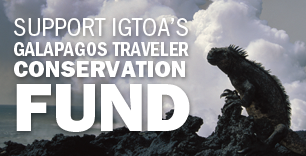Search
Tag Cloud
Subscribe
Ecuador’s Record Breaking Debt-for-Nature Swap to Provide $450 Million in Galapagos Conservation Funding through 2041

Things are looking a little rosier for the Galapagos Islands after Ecuador announced last week that it had negotiated a deal with Credit Suisse to buy back $1.6 billion of its debt at a 60% discount. The deal will reduce the country’s debt payments by roughly $1 billion and funnel $450 million towards Galapagos conservation and management over the next 17 years. The new, cheaper-to-service debt will be repaid through a $656 million “Galapagos bond,” which is set to mature in 2041.
Debt-for-nature swaps (sometimes referred to as “blue bonds”), first developed in the late 1980s, are financial instruments in which creditors provide relief to debt-strapped countries in exchange for commitments to protect nature and tackle climate change. Though still not widely used, many people see the swaps as an innovative, win-win strategy to help cash-strapped countries free up fiscal resources while generating badly needed funding to decarbonize their economies, prepare for climate change, and protect biodiversity.
Ecuador’s $1.5 billion swap is the largest to date, dwarfing Belize’s record-breaking $500 million deal in 2021. The arrangement will provide roughly $17 million in annual funding for Galapagos conservation through 2041. Though details on how the funds will be spent still seem a little murky, Reuters reports that at least some of the funding will be used to improve protection and monitoring of the vast Galapagos Marine Reserve, which is under serious threat from illegal industrial fishing operations.
For the Galapagos, the news couldn’t come at a better time. Between 2000 and 2019, the number of people visiting the islands increased from just under 70,000 to more than 270,000. This increase is due to the ever-growing popularity of land-based tourism, which has proven difficult to regulate as effectively as ship-based tourism. If the current rate of tourism growth continues, the number of people visiting the islands annually will increase from just over 270,000 in 2019 to over a million by 2040. In 2016, Ecuador committed itself to a zero-growth tourism strategy for the Galapagos Islands in response to concerns expressed by UNESCO and the international scientific community about the potential effects of unyielding land-based tourism growth. While international tourism essentially disappeared from the islands during the pandemic, it appears that annual tourism growth is back to pre-pandemic levels with no signs of slowing. New policies and strategies are needed to better manage tourism growth and to improve the islands' biosecurity systems to ensure that tourism continues to be a positive force in the Galapagos Islands.






